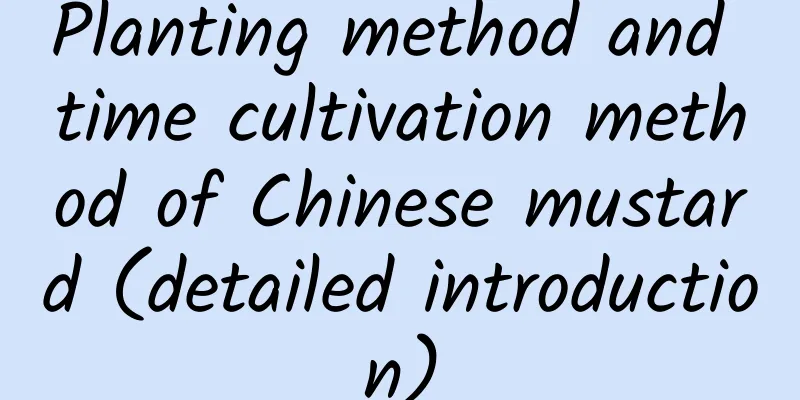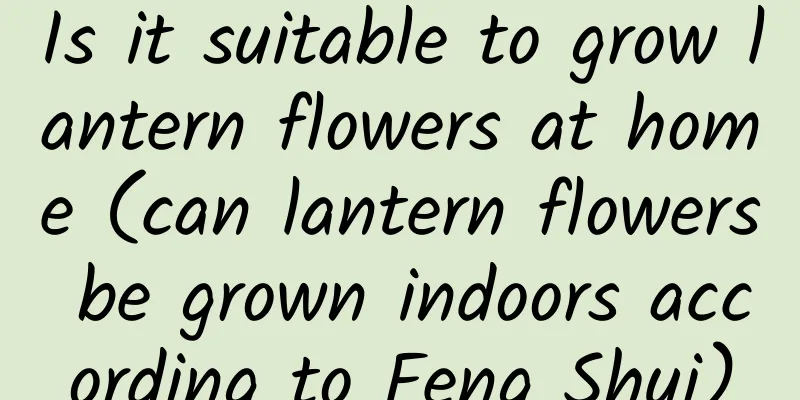Planting method and time cultivation method of Chinese mustard (detailed introduction)

Suitable planting time for Chinese potherb mustardThere are generally three planting seasons for Chinese mustard, namely spring, autumn and summer. The spring planting time is generally between February 16 and April 16, the autumn planting time is generally between September and October, and the summer planting time is generally between July and August. Methods and key points of planting Chinese mustard1. Land preparation Chinese mustard is suitable for planting in loose, nutrient-rich soil. Level the land and make it into strips. Build a drainage ditch. The drainage ditch should preferably be one foot wide. The weeds that are cleared should be removed in time. 2. Seedling cultivation The cultivation of Chinese mustard seedlings requires a certain degree of fertility in the soil, and good drainage. Generally, you can use decomposed farmyard manure to make compost one month before the seedlings are grown, and then sow the seeds into the soil. They do not need to be buried too deep, about 2-3 cm is enough. 3. Planting Chinese mustard should be planted as soon as possible, preferably around 8-10 am. There should be soil at the roots of the planted seedlings. Transplant them when the Chinese mustard seedlings grow to about 12-15 cm. The spacing between transplanted seedlings should be controlled at 20-30 cm. Be sure to water them well after transplanting. Points to note in daily management of Chinese mustard1. Water: During the period of vigorous growth of Chinese potherb must provide sufficient water to keep the soil slightly moist, but not waterlogged. If Chinese potherb mustard does not absorb enough water, the fiber content will increase, resulting in a decline in quality. 2. Pruning: During the growth period of Chinese mustard, the outermost stems and leaves at the roots will rot. They should be pulled out and pruned appropriately to prevent the rotten stems and leaves from infecting the growth of other normal stems and leaves. The soil should also be loosened and weeds removed appropriately. 3. Pests and diseases: The common pest of Chinese mustard is the larvae of the yellow-striped flea beetle, which affects the growth of the roots. It can be solved by spraying diluted chlorpyrifos. The common disease is root knot. When root knot occurs, it can be effectively prevented and controlled by watering with prepared lime water. |
<<: Chrysanthemum seed planting method and time cultivation management technology (full points)
Recommend
How to propagate Pansy and how to take cuttings
1. How to breed 1. Time selection: Pansy is mainl...
The Monstera at home grew a "big white beard". I asked others and found out that it has such a great effect.
These aerial roots are not completely useless. It...
The reason why Monstera does not grow new leaves after repotting
1. Wrong season Reason: It has been difficult for...
What is the best month to plant perilla?
When is perilla planted? The planting of perilla ...
Are potted roses easy to grow? How to care for them?
1. Is it easy to raise? Potted roses are not easy...
The best time and method to plant bitter melon and the growth cycle
Bitter melon planting time Bitter melon can be gr...
How to grow Phalaenopsis at home
1. Breeding conditions 1. Soil: When growing Phal...
Clivia fertilization and maintenance, the correct way to water
1. Fertilization method Clivia is usually fertili...
How to water the Star Beauty
1. Watering in different seasons Generally, autum...
Are King Oyster Mushrooms Carbohydrates or Are Vegetables Carbohydrates?
King Oyster Mushroom is a kind of fungus vegetabl...
Asparagus planting method
Asparagus, also known as asparagus or asparagus, ...
What should I do if the green radish grows too long?
prune When growing green ivy, sometimes it may gr...
What should I do if my fortune grows crooked?
1. What should I do if it grows crooked? 1. The q...
How to cultivate succulent rabbit ears
The succulent rabbit ears are very cute. Most of ...
Goldfish flower cultivation methods and precautions
The goldfish plant, also known as the goldfish fl...









